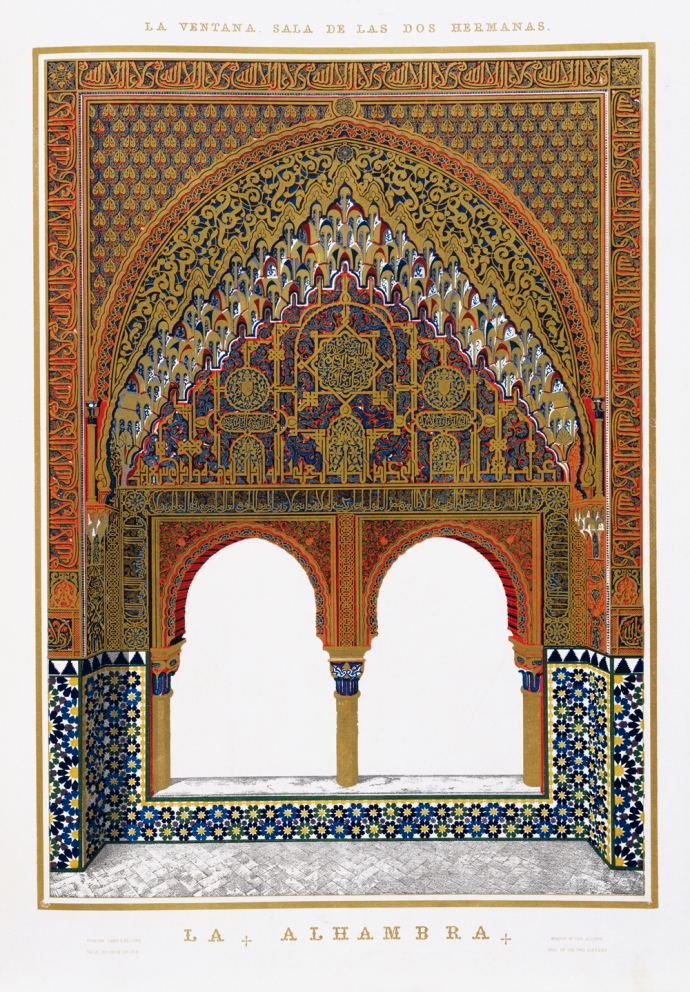Ever since William Chambers built his fantasy Alhambra garden folly in Kew Gardens in 1758, the famous Nasrid palace in Granada has been reproduced and re-imagined by architects and designers all over the world. From the Alhambra Palace theatre that stood in Leicester Square in London to the Alhambresque interior of the pumphouse at Potsdam - these are versions of the palace, filtered through both the publications of Owen Jones and fantastic imaginations, in which the Alhambra was used to conjure up an exotic, luxurious or wondrous place. A piece of the 'original' Alhambra building, a wooden ceiling, even ended up in Berlin in 1891, where it was built into the ceiling of an oriental room in a German banker's home.
But exotic was not the only meaning of the nineteenth-century Alhambresque. In Spain, architects flirted with expressing ideas of nationhood through the architecture of this medieval Islamic palace. European Jews in the mid-nineteenth century adopted (or were allocated) the Alhambresque as a suitable style in which to build their forward-thinking, reformed synagogues, such as the Neue Synagogue in Berlin (1866). Meanwhile in Istanbul, Sultan Abdülaziz patronised buildings that were decorated with Alhambresque motifs as examples of a new Arab style. In this seminar I will look at how the Alhambresque was used to express different ideas about identity and culture in the nineteenth century, focusing on examples in Jewish and Islamic contexts. Using specific examples I hope to show the variety of complex meanings that came to be expressed through the many different versions of this medieval Islamic palace.
Anna McSweeney PhD, The Department of the History of Art and Archaeology, SOAS London, 2012.


